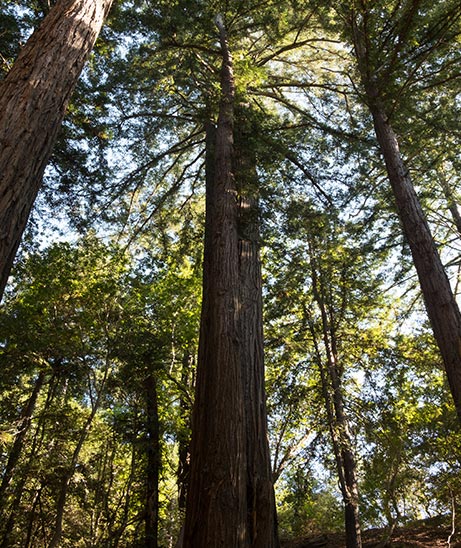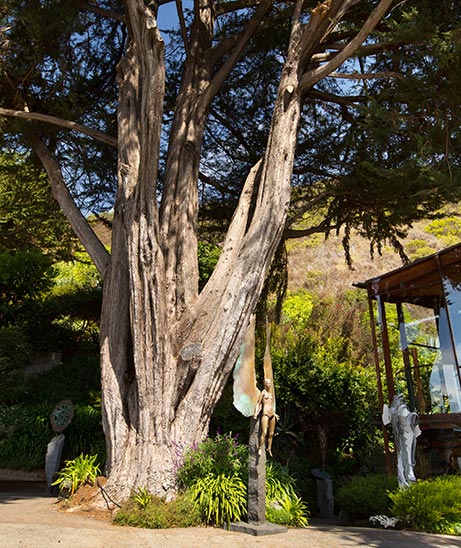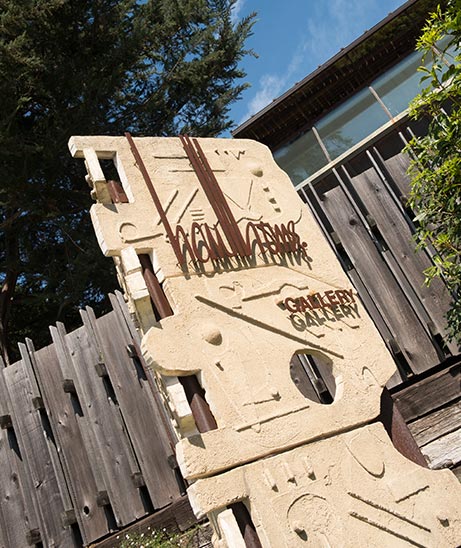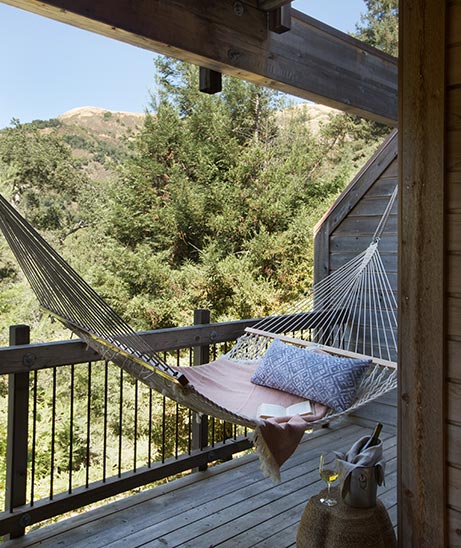The Call of the Frontier
From its beginnings as an unmapped expanse to its more recent history as a hippie hideaway, Big Sur has embodied the American experience: wild, free and unrestrained.

Early Inhabitants
Once called "El pais grande del sur" by Spanish settlers, "the Big Country of the South" referred to the unexplored wilderness along the coast south of Monterey. Thousands of Native Americans lived in the Big Sur region prior to the arrival of Spanish explorers in the 16th and 17th centuries. They belonged to three separate coastal tribes, each with different languages, religious beliefs and cultures.
The Ohlone, also known as the Costanoans, spanned from San Francisco to Point Sur. The Esselen occupied the area between Point Sur and Big Creek and inland to the upper Carmel River and Arroyo Seco watersheds. The Salinan lived from Big Creek to San Carpoforo Creek. The three tribes were mainly hunter-gatherers, relying on a diet of acorns as well as fish from the ocean and nearby rivers.

Spanish Roots
Even though Spanish expeditions of California started with Juan Rodriguez Cabrillo in 1542, and continued with Sebastian Vizcaino’s visits to Carmel and Monterey in 1602, Big Sur remained protected from the Spanish until Gaspar de Portola’s second expedition in 1770. It was then that Father Junipero Serra established Mission San Carlos at present-day Carmel River State Beach, along with two other missions east of the Santa Lucia range, Mission San Antonio in the San Antonio Valley and Soledad in the Salinas Valley. The Spanish brought Ohlones, Esselens and Salinans into the missions, and drastically altered native life in the region.
When Mexico won its independence from Spain in 1821, California became a Mexican state, with Monterey remaining the state capital. The vast mission lands were secularized and divided into livestock “ranchos.” Any law-abiding Mexican Catholic was now eligible to receive land grants. These ranchos still shape land-use patterns around Big Sur: Andrew Molera, Garrapata, and Point Lobos State Parks, and the lands of San Antonio and Nacimiento Reservoirs were carved out from larger ranchos.
After years of tension between Mexican ranch owners, or "Californios," as they called themselves, and American pioneers migrating west through the Sierra Nevada, conflict erupted at the outset of the Mexican War. In 1846, the United States seized California. In 1849, gold was discovered at the foothills of the Sierra. On September 9, 1850, California statehood was declared, making it the 31st state in the nation.
Two land grants spanned Big Sur — the 8,984-acre Rancho El Sur, owned by Juan Bautista Alvarado, and the 8,876-acre Rancho San Jose y Sur Chiquito. The 1862 Homestead Act successfully enticed settlers to the Arroyo Seco and Big Sur valleys. Early Homesteaders were self-sufficient; they ran cattle and horses, hunted, made cheese, kept bees, planted orchards and raised poultry, hay and vegetables. They married into already-existing Indian and Spanish coastal families, thus mixing the heritage of the old settlers. Their names and legacies are still present down the coast: Soberanes, Molera, Cooper, Pfeiffer, Castro, Burns and Gamboa.

The Post Legacy
Among Big Sur’s early pioneers, one of the most remarkable is William Post. In 1848, 13-year-old Bill Post arrived in Monterey. A native of Connecticut, he was the son of a retired sea captain, and was himself in love with the sea. Bill had sailed the Atlantic as a cabin boy on The Brooklyn before he came ashore at Magdalena Bay with a friend. The next morning, the two lads found their vessel gone, so they walked barefoot to La Paz, where they got onto The Mizzen Top, a government ship heading to Yerba Buena (San Francisco). The boys disembarked at Monterey. Penniless, Bill fished in the bay with an old fisherman, trading his fish in town for a dollar. In 1849, the gold rush started and Bill followed everyone to Sacramento. However, when he returned to Monterey, Post was just as poor as when he had left.
In 1858, he married Anselmo Onesimo, a Rumsen Indian girl from the Carmel Valley. Together, they found a piece of land at Soberanes Creek and decided to head to Big Sur. On March 1, 1859, Charles Francis Post was born in the cabin his father had just finished building. The Posts then had Joseph W. Post in 1862, and later two daughters, Mary and Ellen. Today, the Post legacy is integral to Big Sur. The Post House, located at the highway turnoff to Ventana, still remains. The Post Ranch Inn, across on Highway 1, is built on Post land.

Beatniks and Hippies
In the early 1900s, the region more formally adopted its current identity when residents petitioned the government to officially name the post office “Big Sur.” Then, in 1937, Highway 1 brought the 20th century to the region.
Built by convict laborers, the highway paved the way for Big Sur’s modern culture of artists, beats, hippies, tourists and the wealthy. Henry Miller moved to Big Sur in 1944, and his 1958 "Big Sur and the Oranges of Hieronymous Bosch" inspired a generation of Beat writers to follow in his footsteps. The Hippies followed the Beatniks in the 1960s, thus contributing to Big Sur’s bohemian counterculture. While the 1960s are no longer, the culture of New Age Mysticism and experimental psychotherapy still thrives, making Big Sur an all-American haven of modern eclectic nature-attuned spirituality.
Big Sur Today
It wasn’t until the early 1950s that electricity arrived in Big Sur, and it still doesn’t extend to some of the more remote areas. Big Sur’s 300 square miles are predominantly comprised of state parks, national forests and unincorporated public land. The region is sparsely populated, with about 1,000 inhabitants who are an eclectic mix of descendants of the original settler and rancher families, visitors who never left, wealthy homeowners, artists looking for inspiration and writers seeking tranquility.
The mountainous terrain, limited property available for development and environmentally conscious residents have kept the “Big River to the South” largely unspoiled — allowing it to retain a romantic, frontier mystique.